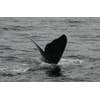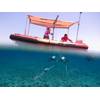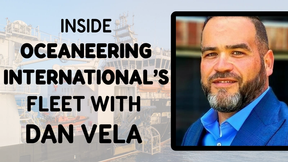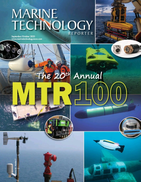Scripps' San Diego Advantage
Margaret Leinen, Director, Scripps Institution of Oceanography, UC San Diego, shares her insights with MTR regarding the internationally regarded institution and it’s Southern California roots.
Can you share with MTR the history of why you are located here in the San Diego area?
The story of Scripps Institution of Oceanography started early in the 20th century when UC Berkeley biologist William Ritter visited San Diego and connected with the Scripps family, which supported a vision of creating a scientific hub that would investigate the ocean and life in it. Their collective hope was that these investigations would eventually add knowledge of great value to the world. This collaboration kick-started an era of exploration and discovery that continues today. Scripps has become one of the most important education and research centers for understanding and protecting the planet and its researchers travel to all corners of the earth and oceans. But although Scripps’ research is global, its roots remain local and intricately connected with the San Diego maritime industry and “blue economy.”
So specifically, what are some of the advantages that you have by being located here?
Scripps is in a perfect position in San Diego, not only by being part of UC San Diego in La Jolla, but through our ability to foster close links to the Navy, scientific collaborations with the Office of Naval Research and NOAA’s Southwest Fisheries Science Center, and maritime businesses. The Scripps Nimitz Marine Facility, based in the heart of the maritime community in Point Loma, is home to our four research vessels and the research platform FLIP, as well as the future base of Research Vessel Sally Ride, currently under construction. Our Nimitz pier is currently being renovated, and it is vital that our ships are able to relocate to temporary berths nearby, which is possible using Port of San Diego facilities.
The strength and rapid expansion of marine-related businesses in the San Diego area provide key advantages for us. These range from maritime employment and support for our ship facilities, which pump nearly $30 million per year directly into the maritime economy, to linking with marine businesses for ocean exploration. Engineers at Scripps are able to create innovative new instruments at our Marine Science Development Center, and then contract with machine shops throughout the community to take advantage of the strong local high-tech manufacturing sector. Scripps routinely connects with maritime experts around the San Diego area to leverage their skills and expertise.
Do you see yourself as part of the “Blue Tech” community here?
Absolutely. At Scripps, we are strengthening alliances with the private sector to play a stronger and more vibrant role as part of the rapidly growing marine economy. The ocean historically has been the lifeblood of the San Diego region.
Scripps receives support from our maritime neighbors and gives back in many ways; for example, our Coastal Data Information Program (CDIP), which has been a vital component of the California coastline for nearly 40 years. A network of CDIP ocean buoys positioned at key locations transmits data crucial not only for science, but for coastal management, wave forecasting, and maritime navigation.
Are there advantages by being part of this Blue Tech cluster? Explain.
Scripps is tackling some of the most challenging issues facing our planet today, from air and water pollution to climate change, natural hazards and finding new medicines from the sea to treat modern diseases. It takes a broad spectrum of supporting organizations in the maritime sector to support us in these investigations and help us find solutions. Not only do we have leading marine scientists, but we also train the next generation of ocean and earth science leaders. Being based at the heart of a dynamic blue tech sector supports these efforts and ensures that these students have the necessary capabilities at hand.
(As published in the October 2014 edition of Marine Technology Reporter - http://www.marinetechnologynews.com/Magazine)

















 August 2025
August 2025



